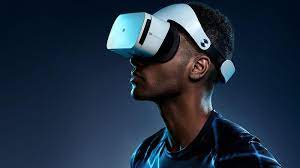Virtual Reality (VR) gaming has long been hailed as the future of interactive entertainment, promising unparalleled immersive experiences and transporting players to fantastical realms. While the hype surrounding VR gaming is palpable, it is crucial to explore the reality behind the promises and examine how this technology has evolved in the gaming industry.
The Promise of Immersive Experiences
The promise of VR gaming centers on delivering immersive experiences that go beyond traditional gaming. Virtual worlds and environments aim to captivate players with a sense of presence, allowing them to feel truly immersed in the gaming universe. Realistic interactions, from natural hand movements to lifelike gestures, are designed to enhance the gaming sensations, promising a level of engagement never experienced before.
The Evolution of VR Hardware
The reality of VR gaming has seen significant strides in hardware development. VR headsets have evolved, offering higher resolutions, wider fields of view, and improved comfort for extended gameplay. Motion controllers have become more intuitive, allowing players to interact with virtual environments more naturally. Enhanced haptic feedback further immerses players by simulating sensations, and the advent of wireless VR experiences eliminates the constraints of cables, providing greater freedom of movement.
Game Titles and Content
The availability and diversity of VR game titles contribute to the reality of the VR gaming landscape. From AAA titles developed by major studios to innovative indie games, the VR gaming library has expanded, offering experiences catering to various tastes and preferences. However, challenges in game development, including resource requirements and addressing motion sickness concerns, highlight the complexities faced by developers in creating compelling VR content.
Addressing Motion Sickness and Comfort
One of the realities of VR gaming is the need to address motion sickness and ensure player comfort. Advances in comfort design, such as lighter and more ergonomic headsets, contribute to minimizing discomfort during extended play sessions. Techniques to reduce motion sickness, including smooth locomotion options and comfort settings, aim to enhance the overall VR experience. VR comfort ratings provide users with information about potential discomfort levels, allowing them to make informed choices. Over time, users often adapt to VR, experiencing reduced motion sickness as they become more accustomed to the technology.
The Social Aspect of VR Gaming
The social aspect of VR gaming adds another layer to the reality of this technology. Multiplayer VR experiences enable players to interact in virtual spaces, fostering a sense of shared presence. VR chat platforms offer opportunities for socializing and collaboration in a virtual environment. However, challenges in social VR, such as ensuring inclusivity and addressing potential negative interactions, highlight the ongoing efforts needed to create positive virtual communities.
The Cost of Entry
The cost of entry remains a significant consideration in the reality of VR gaming. While hardware prices have seen reductions, high-quality VR setups can still be relatively expensive. Affordability challenges may limit widespread adoption, emphasizing the need for a compelling value proposition for consumers. As technology evolves and market competition increases, the potential for more accessible and affordable VR experiences may drive market expansion.
The Future of VR Gaming
The future of VR gaming holds promise with anticipated technological advancements. These include further improvements in hardware capabilities, more realistic graphics, and enhanced AI-driven experiences. The potential for mainstream adoption hinges on addressing affordability, expanding content libraries, and creating compelling use cases beyond gaming. Integration with other technologies, such as augmented reality (AR) and advancements in haptic feedback, may further elevate the VR gaming experience. Ongoing industry collaboration and innovation will play a pivotal role in shaping the trajectory of VR gaming in the years to come.
Conclusion
In conclusion, the reality of VR gaming reflects a dynamic landscape marked by technological advancements, challenges, and evolving user experiences. While the initial hype surrounding VR gaming has given way to a more nuanced understanding of its potential and limitations, the industry’s ongoing commitment to innovation suggests that virtual reality will continue to play a significant role in the future of interactive entertainment.



